You’ve been eyeing a project that uses wooden pallets, but you’re unsure how to get started. We’ll show you the first steps.
You’ve Got Your Pallet, Now Where Do You Start?
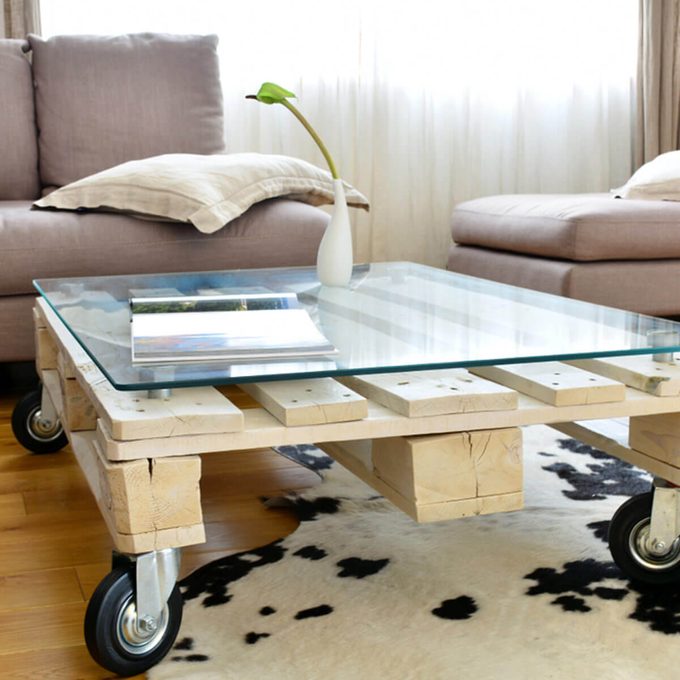
Where to Start with Wood Pallets
You’ve been eyeing a project that uses wooden pallets, but you’re unsure how to get started. Whether you’re planning to use your pallet to make some raised garden beds, patio furniture or a sign for your home’s entryway, there are some things to consider.
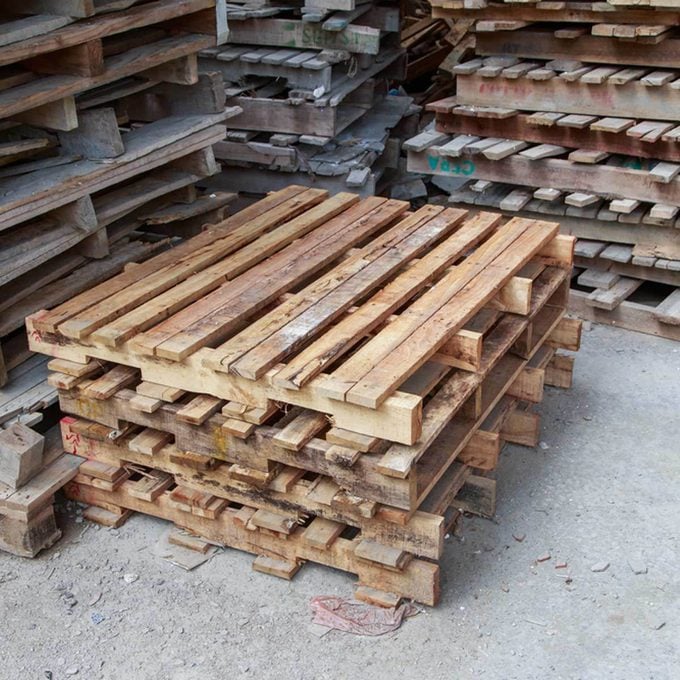
Finding the Perfect Pallet
While you can purchase wooden pallets, there’s a good chance you can find pallets for free—if you know where to look.
Look for free pallets at landscaping companies, feed and tractor supply stores, newspaper delivery and distribution centers and even lumber and hardware stores.
If you find pallets behind businesses, just ask before you take them. Some businesses will be happy to have someone take the pallets off their hands, but others may be saving pallets for future shipments or may have a contract with a recycling company that takes them.
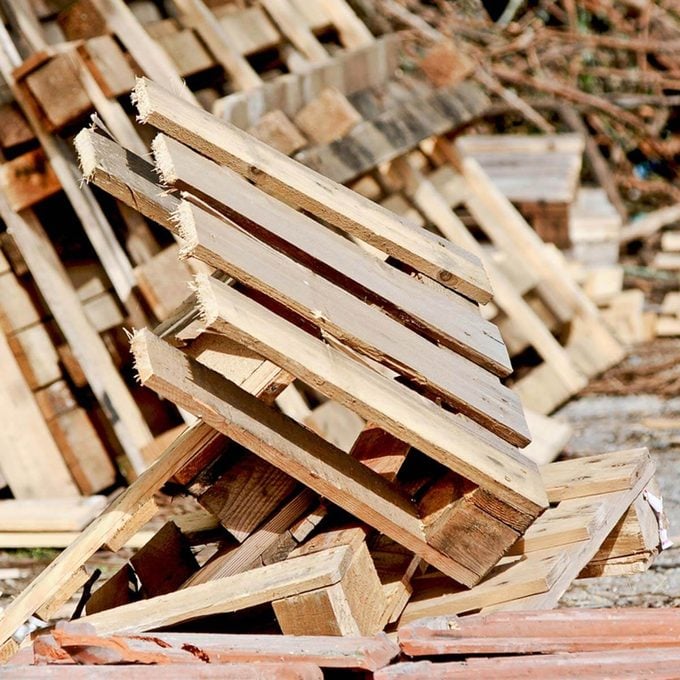
Is Pallet Wood Safe?
While the use of wood pallet for projects has gained popularity in recent years, not all pallet wood is created equal.
Since pallets are used in shipping, they are exposed to outdoor elements, which can include not only dirt and water, but insects, bird droppings and even vermin.
If a pallet is used to transport food, it could harbor E. coli and listeria, along with fungus and mold.
Pallets are also made from wood that has been treated with chemicals. Even if you wash and sand the wood before use, the chemicals can remain and cause problems for some.
10 Things You Shouldn’t Make with Pallets.
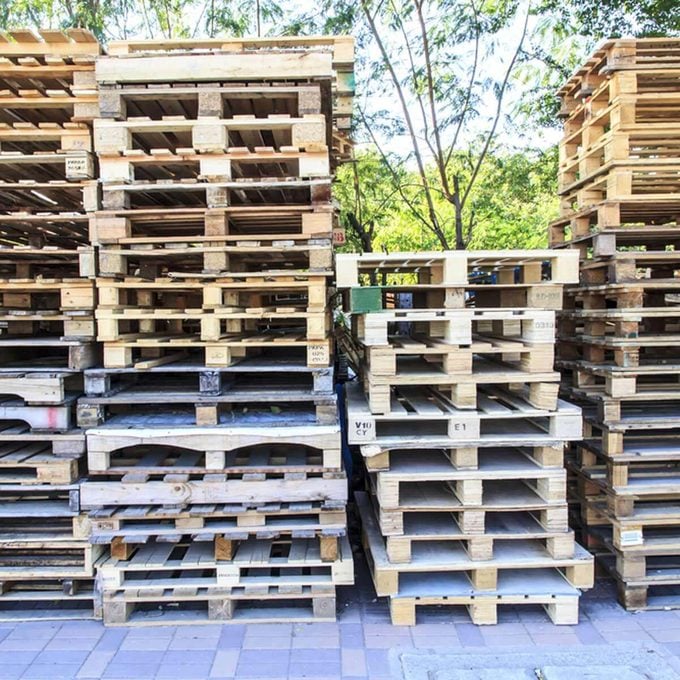
Know the Code
Pallets should have a stamp with a code.
If the code says IPPC (International Plant Protection Convention), that means the pallet wood has been treated by approved measures, however, it does not mean it is free from chemicals. And if you can’t find a code on the pallet, you probably shouldn’t use it.
If you can, ask if the pallets have been heat treated. This means the wood has been heated to a minimum core temperature depending on the specific wood type. While heat-treated pallets can still harbor fungus, mold and bugs, these pallets are considered safer than those that are not heat treated.
Note: If you find that your pallets are not safe for your projects, you should not use them as firewood.
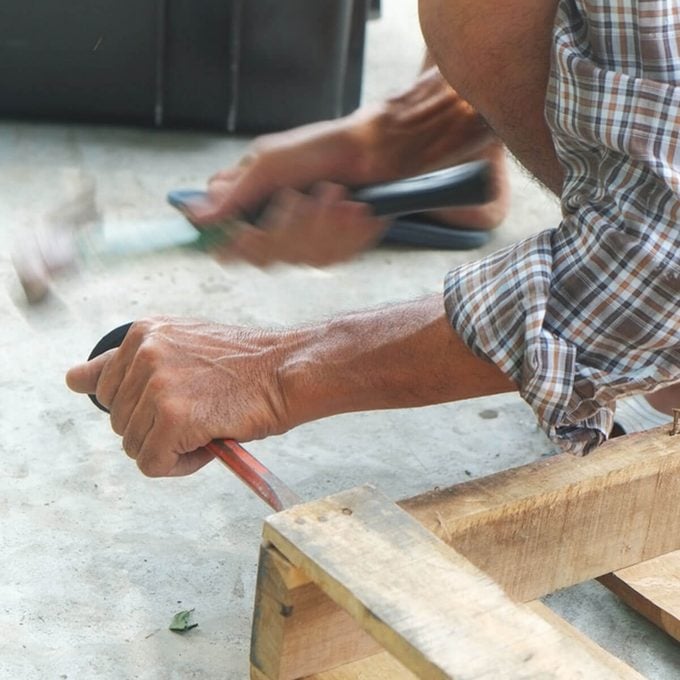
Preparing Your Pallet for Use
Pallet wood can be rough, not to mention full of nails and dirt. Here are a few things you can do to prepare your wood pallet for use.
First, use a pry bar or a claw hammer to break apart the pallet wood, taking precautions not to damage the surface of the wood. Try your best to remove any nails from the wood. Wear safety glasses and protect your skin.
Once the wood from your wood pallet is separated and the nails are removed, you’ll need to cut and sand the wood.
Pallet wood can be extremely rough, so take the time to sand the wood to avoid splinters. Since the wood can contain chemicals and contaminants, sand the wood in an outdoor setting and use a mask or respirator to avoid breathing in dust and debris. You can speed up the sanding process by following these expert tips.
When cutting pallet wood, avoid making cuts near any cracks or nail holes in the wood, as it can cause the wood to split.
Depending on your project, you can then paint or stain the wood.




















